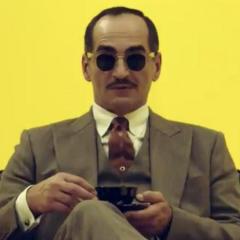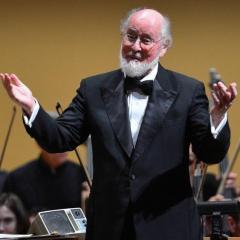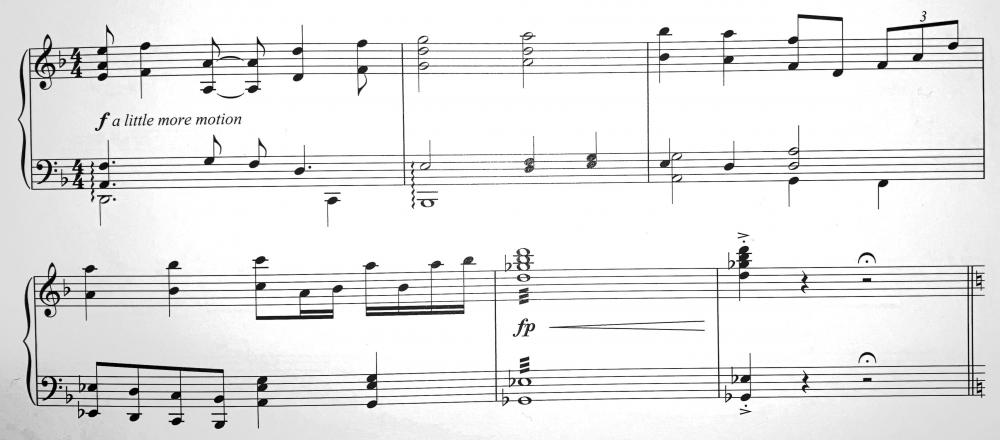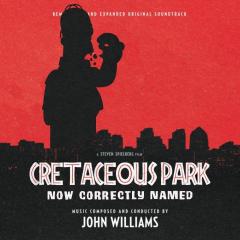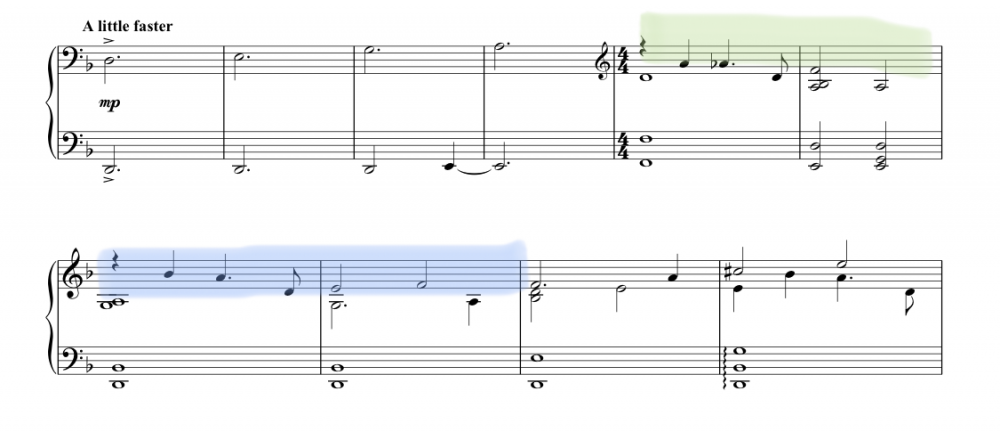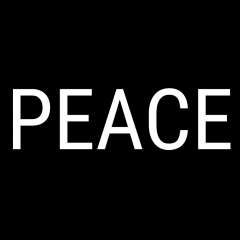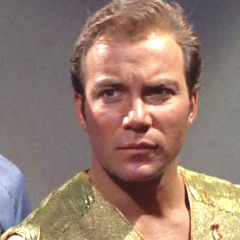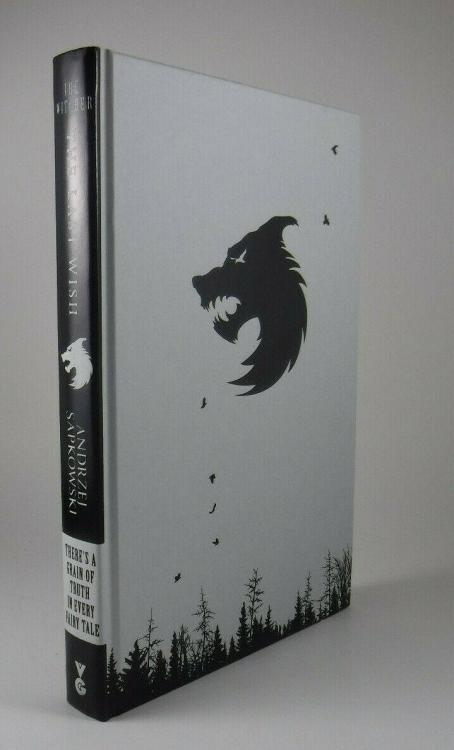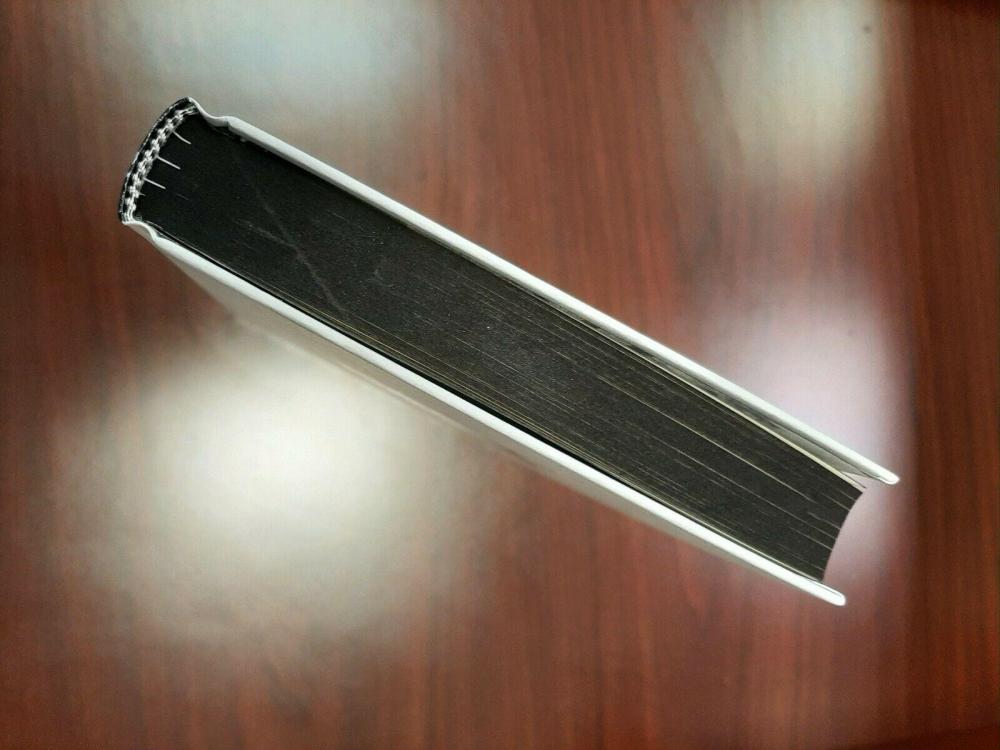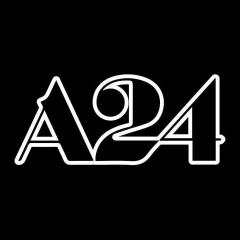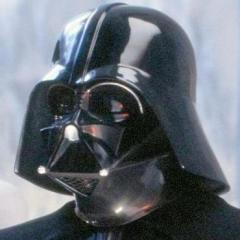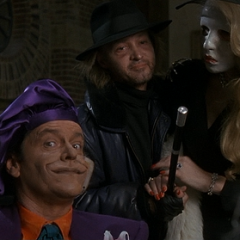Leaderboard
Popular Content
Showing content with the highest reputation on 15/09/20 in all areas
-
I've been putting off starting another of these TROS track appreciation threads, because honestly talking Star Wars feels so exhausting lately. But I happened to listen the cue "Farewell" this morning and was again reminded how superb this piece is, probably the emotional heart of the soundtrack as a whole and a grand musical payoff for so many things Williams was doing in the Sequel Scores. In a way, the power of this cue has a lot to do with the fact that Williams was forced to communicate through music what the screenplay was unable (IMHO) to accomplish: make for a convincing romantic catharsis for the underwritten Rey & Ben relationship, and convey suitable sense of galaxy-wide triumph against the ill-defined First Order. In that respect, I find it similar to some of the best stuff he did for the PT, like "The Dinner Scene," "It Can't Be," and "Lament," where the music massively picks up the slack where the writing & acting falls short. It's a really dense track, with too much to delve into in one post, but here are a few observations: The austere rendition of Rey's theme for her momentary death is exquisite, and by using the comparatively rare ending first (and only?) heard in TFA's 1M7, does a great job tying the beginning and ending of the trilogy together w/r/t her leitmotif. The music that accompanies Kylo Ren dragging himself out of the pit, with those overlapping statements of his motif over a D pedal, is almost Gabriel Yared-like in its dissonant but tonal longing. Delicious stuff. Rey's resurrection is accompanied by what I imagine many Reylos were long hoping for -- a sort of synthesis of her and Kylo Ren's themes. Notice the way melodic semitones, the markers of Ren/Ben's leitmotif, seem to push through all over the place. There's a particularly subtle way in which Ren's former 5-#4 gets turned into b6-5 and then later inverted to 5-b6 which probably deserves more study. The way this surge of musical emotion end prematurely on an unresolved chord calls to mind the other most notable time Williams did this in Star Wars, and prepares nicely the kiss music that follows on its heels. Here's the notation from the (terrific) piano album: Everything following Ben's death, from the tiny bit of string-section mourning Rey is allowed for Ben to the Bb-major choral hymn that concludes the track is such vintage Williams musical exultation that I dare say the whole ST was worth it if just for this sonic reward. And while simple in its emotional effect, the music is again anything if simplistic -- there's even more cool motivic transformations happening with that 5-b6 motif, which flowers into part of the Victory Theme proper. Plus what I suspect is a reconfiguration of the March of the Resistance at 4:14 that I haven't seen anyone else remark on (or maybe I'm just hearing things, wouldn't be the first time!). I'd love to hear all your thoughts, and see what else is going on in this track that I'm surely missing.11 points
-
Seeing (and hearing) that masterpiece alongside Joker made me remember why the Academy is a joke.9 points
-
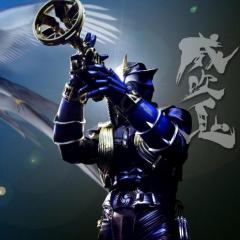
"Farewell" from Ep. 9 Appreciation
ChrisAfonso and 5 others reacted to SilverTrumpet for a topic
The scene itself made me sick, and then a couple months later I found myself coming back to this track on the soundtrack A LOT. There's this complicated mix of emotions going on here. Pain, discomfort, hopelessness, hope, relief, romance and beauty. It's all woven together so well and makes you feel what the scene is supposed to make you feel, but again, like everything in this movie, doesn't bother to make you feel on your own. Really, between Attack of the Clones and The Rise of Skywalker, it's amazing that Williams was able to pinpoint the emotions that were SUPPOSED to be present in the movie but weren't at all. Then, to be able to communicate that via music to the world. Wow.6 points -
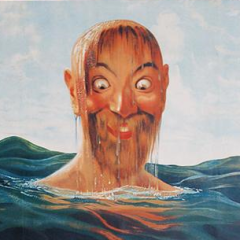
Restored Isolated Score: A.I. Artificial Intelligence
The Illustrious Jerry and 4 others reacted to Holko for a topic
Thanks for the suggestion, @JohnnyD! What a fantastic subtle score and what a journey. I rewatched the film two nights ago in preparation, and also listened to the whole score while reading @Incanus' excellent analysis - so this time this is not a simple plug to something I like like it was with his HP1, it actually was a major major help in wrapping my head around the score, unused cues, alternates and everything. Go check it out! You know the drill: treat the score as gospel, edit the movie around it. Thankfully I didn't need to do much of the latter - the big plus here is a good number of unused/tracked over cues coming to the fore. And other stuff coming out from under the other sounds. Let's get right into it! Movement I - The Family Cybertronics already presents the problem of syncing up such minimalistic music with well hidden sync points - but I guess this works fine. As far as we know, Henry Is Selected is for a deleted scene - but since I think we don't know of, and certainly don't have any deleted scenes, I thought I should just try using it as a partial alternate where the coldness of the cryosleep gets overtaken by Monica's cor anglais. It ends earlier than it should but better than just a black screen for the whole thing. Whew, this is an unexpectedly long stretch. Plenty of unused music - part of David's Arrival, part of Of Course I'm Not Sure, all of David Studies Monica (strange approach to a somewhat strange scene), and part of Reading the Words (since the movie and the promo both use different edits of this cue, I took the liberty of approaching it as two versions of the same bit side by side). More unused music, I think I synced it up correctly. Both fit. David and the Spinach is kinda straightforward enough, but The Operating Scene's unused and quite a bit longer - I found one obvious cut, from the doctor hunched over cleaning the thing, to him being more upright talking to Monica, the thing never seen in his hands again. Syncing the noise with the cleaning laser was a fun idea. Cue's longer than the scene, I guessed a bit. All of these are straightforward enough. Abandoned's coda would score Gigolo Joe's first appearance but I didn't feel that was right, so I just let the fade to black stay black.5 points -
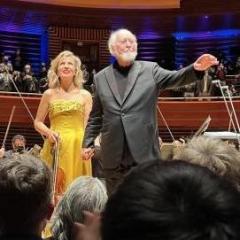
"Farewell" from Ep. 9 Appreciation
Falstaft and 4 others reacted to Taikomochi for a topic
I have always wished the Victory theme had been used in the marketing. Something like this would have made an incredible final trailer5 points -
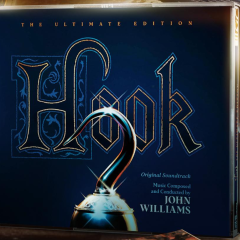
John Powell's FORCES OF NATURE (1999) - new 2020 La-La Land premiere
Yavar Moradi and 3 others reacted to Jay for a topic
Congrats to @Koray Savas's brother @Kaya for the liner notes gig!4 points -
@Bayesian Good for you! Moving from mp3s to lossless really makes a difference. As do a good audio system! As for files and gear - don’t waste your money on things that won’t up your experience. Don’t let audiophile snobs fool you into buying hi-res stuff (24 bit/96 kHz), the advantage is purely technical. Files are more expensive and not worth the extra money. Buy god speakers, it’s worth the investment. Buy good cables but you don’t need audiophile level. That shit can be crazy expensive and you won’t hear any difference compared to medium price, high quality equipment. Trust me. I’ve poured more money into cables and connectors than I’d like to admit, so I’ve learned the hard way.4 points
-
I love that horn chorale more, but that goes for the others in the film - especially when Ben throws his Saber into the sea. Where else in a modern score do you hear brass writing like that!4 points
-
John Williams and Sarah Willis's Horn Challenge
Martyprod and 2 others reacted to Marian Schedenig for a topic
Good of her to sterilise the mouth piece, even before COVID was a thing. Of course, what she should have done is stuff Williams with cookies until he agreed to write solo horn arrangements and a new concerto for her.3 points -

J.K. Rowling Just Posted A New Harry Potter Short Story
Molly Weasley and 2 others reacted to Holko for a topic
Her career was dead when she finished HP, wrote other supposedly not great books, gave her name to a garbage play script and started writing bad movie scripts.3 points -
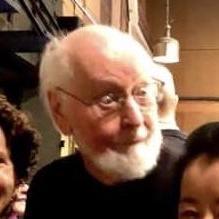
"Farewell" from Ep. 9 Appreciation
Ludwig and 2 others reacted to BrotherSound for a topic
Ah, I was wondering when you'd get around to this one, probably my favorite cue of the entire score! Significantly, this is the only time in the score we hear the standard Kylo Ren motif, immediately followed by the "redeemed" variant (with an added passing tone): I'd never really thought of JW much in connection with Bruckner before @Falstaft brought in up in connection to The Last Jedi, but I'd swear I hear some slight influence from the Adagio (the third and final movement) of Bruckner's ninth symphony here, specifically the way a shattering dissonance is immediately followed by a complete change of character to softer, beatific music featuring the woodwinds:3 points -
In fact, quite a few fragments of the film have already been restored on the forum (@crumbs , @Skelly). But I was interested in trying to do it myself, and already with the whole score. The main "feature" of this score is that quite a lot of the music in the film has been heavily edited. Basically, it concerns action scenes (Quidditch, The Whomping Willow, Werewolf Scene). So there is not much point in "restoring" the score, a lot of black screens had to be inserted, but nevertheless, it's interesting to see what the composer originally intended, as well as to suppose what the rough cuts of the scenes looked like (JW wrote most of the music at a very early stage of post-production, but some cues were subsequently rewritten). Also at the end of the post, I experimented with my mockups of earlier versions of cues. For convenience, I have combined some short cues into one video, even if they sound with a long pause. Also in the description for the video, I decided to briefly mention the various thematic elements that sound there. Here I will write a quick overview of such stuff. Themes, motives, etc: Hedwig's theme - the only theme from previous films. Only the "A-version" is used (often only the first phrase), and takes on a nostalgic and melancholic character. Window to the Past - a simple lyric melody. It seems that initially it was supposed to scores only the dialogues between Harry and Lupin about Harry's memories and parents, but later the role of this theme increased, and began to be used when conjuring Patronus (as theme symbolizes happy memories), as well as Sirius Black, as the most dear person for Harry. Double Trouble - a song performed by the school choir on the first day at Hogwarts, written with words from Shakespeare's Macbeth. A kind of alternative to the Hogwarts hymn from the Philosopher's Stone, at the beginning it's used to create a mystical atmosphere in the film, then it depicts school affairs (Hagrid's lesson, the Fat Lady's escape). Similar to the hymn, it sounds only in the first half of the film. I have identified 2 versions of this theme: regular and 6/8 (time signature). It doesn't mean anything, I just separated them for convenience. Buckbeak's theme - only used once as a leitmotif, but it occupies a prominent place in the score. Sirius Black motive - consists of 3 intervals (like the Stone motive from Philosopher's Stone, consisting of 3 notes). Associated with the image of the "evil" Sirius, who is wanted, and (Harry thinks) betrayed his parents. Mystery/Marauder's Map motive - has a difficult fate. The motive consists of several repeated notes, and ends with a chromatic figure (similar to Black's motive), always performed on the harpsichord. Williams may have somehow connected this motive with the Sirius motive, but in fact, he used it in the scenes with the Marauder's Map. However, after the entire score was recorded, it was decided to re-associate this motive with Peter Pettigrew. So, in the film, the motive is added to more places, mixed with/tracked over the original material. Time-Turner motive - a four-note motive that always sounds as a repetitive ostinato. Used when the "second" Harry and Hermione are trying to change the course of events. The notes change frequently in the motive, but it still remains recognizable. Mystic strings - yeah, a silly name, but I mean solo strings, playing chromatic figures with tremolo (sometimes sul pont.). They have no definite meaning, in addition to mystic, they depict Dementors, but they are also an important element of the score. The Dementors motive - a rhythmic figure performed by low strings and woodwinds. Used primarily when Dementors "sucking the soul" of an opponent. The Prophecies aleatoric - aleatoric figurations at various instruments, used in two scenes with Trelawney. Note: I inserted music in its pure form, without an "speech track", since I am not good at extracting audio from 5.1/7.1, and, in principle, I also like this method more. I also shared a folder with all the videos that are embedded here. If this method is more convenient for you, then here is the link. 01 - The Prologue 1M1 Opening III Traditionally, the film begins with Hedwig's theme that is played here almost in classic form. As expected, fits. 02 - Aunt Marge's Waltz and The Parents Portrait 1M3A That's A Lie! (0:06-0:14) 1MB New Intro (0:20-0:47) 1M4 Aunt Marge's Waltz (0:47-2:31) 1M5 Parents Portrait (2:35-end) But already in the second cue oddities begin. In the film, the cue begins only when the aunt's finger swells, and it sounds in a shortened form. It's also known that a new intro was composed for the waltz, and, interestingly, if put the cue in this form, it turns out that the intro ends just at the moment with the Marge's finger. Most likely, the sequence with transformation of aunt Marge was not edited in some way, but before that moment something could have been cut. Anyway, I didn't bother to insert black screens, although this is hardly correct. And I had to ignore the mini-cue "Aunt Marge Point the Finger", since there is nowhere to insert it (maybe it was composed after the decision was made that this cue would be shortened? hmm). The Parent's Portrait fits, here for the first time a Window to the Past theme is presented, but so far in incomplete form. 03 - The Empty Playground · The Knight Bus · Concerto for Hub Caps 1MC The Empty Playground (-0:34) 1MD The Knight Bus (0:34-1:48) 1M8 The Knight Bus Ride "Concerto for Hub Caps" (1:54-2:52) 1M9 Newspaper Headliner (2:57-3:55) 1M9AN Squeeze Bus Waltz (3:55-4:20) 1M9B Second Collision (4:21-4:31) 1M9A Squeeze Play (4:44-5:10) The Empty Playground almost fits, except for the last two bursts. Next cue "The Knight Bus" (sequel to the Marge's Waltz, heh) also fits, but the ending with the celesta was dialed out in the movie. Concerto: I expected that I would have to insert a lot of black screens here, but in fact only one fragment was cut out here. There are some extra shots in the "deleted scenes" on DVD, but I decided not to insert them, since not all of them are completed in VFX. Interestingly, when Stan talks to Harry about Sirius Black, the mystic strings sound instead of his motive. There are a few small edits, but amuse the moment with the narrowing of the bus. Perhaps initially this process should have been slower, so the music turned out to be longer. I inserted both versions of this fragment (first the second (sounds in the movie), then the first). 04 - The Monster Book · Discussing Black 2M1 The Book Attacks (-0:38) 2M2A Discussing Black (0:45-end) The Monster Book: Just one slight edit. Discussing Black: Fits, but in the movie, this cue was shortened and mixed with the SHAWM (that's the source cue, so I didn't include it). The Sirius Black motive is introduced here, along with a strong hint of Mystery/Marauder's Map motive. If everything is clear with Black, JW clearly somehow connected the second motive with Black's motive, but all subsequent renditions are already directly connected with the Map, so everything is complicated here. 05 - The Train to Hogwarts · Apparition on the Train 2M3v1 The Train to Hogwarts (-0:22) 2M3v2 The Train to Hogwarts (0:26-0:44) 2M4 The Dementor Appears (0:59-end) The Train to Hogwarts: I again inserted two versions known to us (the first sounds in the film). In both versions, Double Trouble already sounds, in an incomplete form. It is interesting to note that the first version differs in orchestration compared to the notes, while the second is the same. Apparition on the Train: Lots of microedits. Perhaps the cue should have started earlier, then the first black screen could have been avoided, but I left it as it's in the movie. A piece (since 2:10) in the movie is out of sync, possibly on purpose. The ending (when Lupin comes to the rescue) was dialed out from the film and replaced with a choral chord - the cue was written early on, when Williams scored Patronus in a more dramatic way. The mystic strings has a horror function here. As the Dementor drains Harry, the Dementors motive sounds. 06 - Double Trouble · The Dumbledore's Warning · Double Trouble March · Rainy Nights, Dementors and Birds 2M5 Something Wicked Intro (-0:16) 2M5A Double Trouble (0:14-0:59) 2M6 Dumbledore's Warning (1:07-1:52) 2M8 Double Trouble March (1:56-2:23) 2M9 Rainy Nights, Dementors and Birds (2:29-end) All these cues featuring Double Trouble, sounding in different forms. Double Trouble with intro and in shortened form, fits. The Warning almost fits (I had to slow down a bit for a long shot of Dumbledore), but the ending replaced with material from the next cue. March: It's repeated twice on the recording, but in the film it sounds only once. Rainy Nights: In the film, the first half is shortened. The second half fits with the inserted deleted shots with Hagrid (Ignore fps issues on this fragment ). 07 - The Grim · The Hippogriff Lesson · Befriending the Hippogriff · Buckbeak's Flight 2M10 You Have The Grim (-0:32) 3M1+2 Double Trouble On The Hill (0:32-1:58) 3MC Befriending The Hippogriff (2:05-3:11) 3M4AX Drum Overlay (3:18-3:30) 3MCA [3M4AN] Riding The Hippogriff (3:28-end) The Grim: fits, but I used an alternate mix with a solo viola. Featuring the Prophecies aleatoric (harp and piano). Double Trouble on the Hill: Double Trouble 6/8 sounds throughout the cue. The first half was dialed out in the film, one black screen I had to be inserted. In the movie, the cue ends a little earlier when the book attacks Neville. I don't know how Williams intended it, but I let the cue finish as Hermione puts down the book. Befriending the Hippogriff: the second half is cut out in the film (with a short "enlightenment"), but despite this, everything fits. However, the ending (marked "optional" in the score) is not used in the film and was intended for the original start of the next cue, so I didn't use it either (see Bonus section). Buckbeak's Flight: the opening with the "runway" is greatly shortened, then I had to insert a couple more black screens. Further, when Buckbeak flies over the lake, in the film, the music is out of sync so that the climax coincides with the shot where Harry spreads his arms. Williams appears to have planned a climax for the wide shot with Hogwarts. Later in the film, it seems that the edit has changed, or some shots have been cut out, and therefore the ending is shortened and out of sync. Here I didn't edit the shots for sync, and just inserted a boring black screen, but the cue ends where it should have been. 08 - Bonding with Hippogriff · The Newspaper 3M5-5A[New?] Bonding With The Hippogriff (-0:43) 3M5B Kids Inspect Newspaper (0:46-end) Bonding with Hippogriff: first half dialed out in the movie. The second half is essentially a 3M13 Sir Cadogan cue with added percussion and a slow tempo. In the film, he doesn't sound all. At the same time, it seems that these 2 halves were recorded separately. In the film, instead of the first half, several bars of percussion sound only. The second half had to be taken from the film. The Newspaper: The Sirius Black motive comes back. Possibly out of sync in the movie, and ends later, so I slowed down the newspaper shot. 09 - The Boggarts 3M6N Snape Dresses Up (-0:49) 3M6A The Spider (0:52-1:22) 3M6B The Snake (1:23-1:39) 3M7X New Beginning (1:38-1:58) 3M7A Clown Out of the Cupboard (1:57-end) Snape Dresses Up: the first half of the new version and the second of the original version sound in the film. I inserted the new version here. The Spider: fits. There are 2 versions of ending on LLL - I inserted an extended one here (both endings are not used in the film) The Snake fits. Clown Out the Cupboard: I've inserted "New Beginning" here (which sounds in the movie), microedits. The ending (balloon) was dialed out, replaced by sounding of source cue. The Boggarts - Alternates 3M6 Snape Dresses Up (-0:42) 3M7A Clown Out of the Cupboard (0:43-end) It would be unfair to ignore the alternatives. Here is the original version of Snape Dresses Up and the Clown Out with original beginning. As for me, this version (Clown Out) is deeper and more interesting, as it essentially reproduces Harry's flashback from the train, quoting theme of cue 2M4 The Dementor Appears. 10 - On the Bridge · Remembering Mother 3M9 Revealing The Bridge (-0:36) 3M10Alt Remembering Mother (0:40-end) Everything fits here. Here the Window to the Past sounds in its full form, although a lot of time has passed since its first rendition. 11 - The Portrait Gallery · The Big Doors · The Great Hall Ceiling 3M11 The Portrait Scene (-2:13) 3M11A The Big Doors (2:13-2:50) 3M12R The Great Hall Ceiling (2:47-end) The Portrait Gallery begins with the sarcastic-ironic sound of Double Trouble B (the only time it's used apart from A). The theme is played by 3 recorders at once for a more nasty and fake sound. But after Dumbledore's appearance, the theme sounds more "panicky". And in the next scene, when Harry overhears Dumbledore and Snape's conversation, Double Trouble 6/8 sounds like a mystical lullaby. At the end of the cue, the Hedwig's theme sounds melancholy. The beginning of the Gallery in the film is greatly shortened. But if the cue starts with a shot where an empty portrait is shown in first time, then it fits. The ending was also cut out and it seems to be irrelevant for the final editing - I still did not understand what should have been instead of the shots with the large doors closing, so I inserted a black screen. The Big Doors (revised ending for The Portrait Gallery) fits. The ending of The Great Hall Ceiling (Hedwig's theme) is dialed out in the film, perhaps there should have been a transition to a deleted scene with Cadogan. 12 - Sir Cadogan 3M13 Sir Cadogan The scene was completely cut from the film, but the music seems to fit (in this version of the cue). 13 - Page 394 · Quidditch, Third Year 4M1 Page 394 (-0:25) 4M2 Quidditch 2004 (0:24-3:14) 4M2XV Choral Overlay (1:37-1:50) 4M2A Quidditch Ending (3:14-end) Page 394 used in place of the original harpsichord intro (can be heard on the OST), fits. Quidditch 2004: So we got to "blackscreeny" madness. A unique theme develops throughout the cue. When Harry sees the silhouette of a black dog, the Sirius Black motive sounds twice. At 2:48 and 2:54, something similar to this motive sounds also, maybe here Harry saw the silhouette for the second time... The original ending was probably never recorded. It looks like the editing of the scene has changed dramatically since Williams wrote the score. However, I managed to find some sync points. In the movie, the cue is heavily edited and, unfortunately, the original sync is almost broken. So I had to ignore the sync points used in the movie. I had to delete a short shot with Cedric and Harry. Also I very much doubt about the ending (fragment 2:58-3:23 in the film is synchronized in a completely different way). 14 - Woods Walk and Bird's Flight · Map to Snow Scene · Up the Stairs 4M3-4NN Woods Walk and Birds Flight (-2:26) 4M5 Map To Snow Scene (2:33-3:02) 4M5N Up The Stairs (3:03-end) During the dialogue between Harry and Lupin, the the Window to the Past sounds again, this time in addition to the recorder, it is played by the clarinet. When the owl flies, the Hedwig's theme sounds in its traditional form, and then smoothly flows back to WttP. Further, playful music with harpsichord and flute sounds. Apparently, after the shot with the Marauder's Map, a some cut shot should have followed. Thus, Map to Snow Scene cue became irrelevant. Up the Stairs is essentially a revised version. In both versions, the shot with the Marauder's Map is accompanied by a Mystery/Marauders Map motive. Also in Up the Stairs there are Invisibility Cloak chords that came here from previous films along with the Hedwig's theme. All cues fit. But in the film, the Hedwig's theme sounds slower and at the same time the first couple of measures with the harpsichord are dialed out. Interestingly, these bars are missing in the sheet score, but I used the LLL-version anyway. Also in the movie Up the Stairs is tracked in second time before the Snowball Fight. 15 - Snowball's Fight 4MC Snow Fight Microediting. It is not entirely clear why there is a pause in the middle of the cue. It looks weird in the movie, I made the second part of the cue start when Draco pushes Goyle. The ending is dialed out from the movie. 16 - The Three Broomsticks · Brief Snow Scene · Summoning the Patronus 4M10N(?) [The Three Broomsticks] (-1:11) 4M10 Brief Snow Scene (1:11-3:16) 4M11 Explore Your Past (3:20-3:54) 4M12 Opening The Trunk (3:54-4:31) 4M13 Harry and Voices (4:36-5:03) 4M14N The Dementor [Dueling The Dementor] (5:10-end) First cue (or the first half of cue) The Three Broomsticks dialed out from the movie. There are the Invisibility Cloak chords playing here again, the cue only seems to start when Harry enters the room. Brief Snow Scene: In the film, the beginning of the cue is mixed with the Christmas song "A Winter's Spell" (The Elves Song, composed by JW), the source cue. Some Hogsmeade footage appears to have been cut out here. The ending, which is a smooth transition to the next scene, is cut out from the film - I think there should have been wide shot(s) for the office before Lupin speaks, so I put b/w filter. Summoning the Patronus: In Opening The Trunk cue the Dementors motive is heard as Harry begins to faint. In Dueling The Dementor, after a successful attempt, the Window to the Past sounds pathetic. Thus, the theme symbolizes all the joyful memories (about the parents) that are necessary for a successful summoning the Patronus. After that, the oboe plays the theme again. Fortunately, all 4 cues fits, with the exception of the contrabassoon solo from the second cue, which was dialed out in the film. 17 - The Buckbeak's Fate · The Marauders Map · Reveal Your Secret 5M1 Buckbeak's Sentence (-0:48) 5M2 Reading The Map (0:53-2:48) 5M2A Reveal Your Secret (2:54-end) The Buckbeak's Fate: judging by the blooper with Harry on the bench, there should have been more shots of Hogwarts or something like that. The music in the film is shortened. The Marauders Map: Oh, everything was suddenly complicated here. The Mystery/Marauders Map motive here runs through the whole cue (along with a lot of mystic strings) and gets its culmination here. I decided to start the cue earlier than in the film: at the beginning of the shot with the marauders map. In the film, the music begins when Harry discovers Pettigrew on the map (as this motive is "reassigned" to this character). Most likely, the footage was cut as Harry moves from the living room to the corridor. The final editing of the next scene is very chaotic and to "restore" the music I had to rearrange many frames in places. It even ended up with a funny black screen in the middle of the frame: it was divided into 2 parts, which were used in different places. Reveal Your Secret: cut entirely from the movie, but fits. According to Williams' idea, it turns out that this is the last time that motive featuring. 18 - The Mention of Pettigrew · The Crystal Ball · The Executioner · The Walk to Buckbeak 5M3 The Mention Of Pettigrew (-0:38) 5M5 The Crystal Ball (0:44-3:29) 5M6 The Executioner (3:28-4:09) 5M7 The Walk To Buckbeak (4:14-end) The piece with the celesta from The Mention of Pettigrew in the film is shortened. In The Crystal Ball, the middle section is completely cut out in the film (interestingly, the big pause at this mark is indicated in the score). Featuring the Prophecies aleatoric again, now to the harp and piano joins synth. Interestingly, at 1:50 in the score, one can notice that the timpani are playing Time-Turner motive (maybe Williams thought that at this time Harry and Hermione were starting to move in time? hmm). In the shots with the Sirius on the Ball there are a couple of microedits. The Executioner fits, and The Walk to Buckbeak in the film starts a little later, but I decided to move it 2 sec earlier for better sync. 19 - The Sentence · Chasing the Scabbers · The Whomping Willow 5M8 Buckbeak Is Sentenced (-2:43) 5M9 Scabbers Runs (2:42-3:46) 5M10 The Whomping Willow (3:55-end) The Sentence: In terms of syncing, this is probably the strangest cue in the movie. If you follow the sync points from the movie, you get a strange black screen before the trio leave the hut. And the sync points themselves look weird. I made 2 separate videos with different syncs. Here I followed the "safe" method, and left almost everything, as in the film, didn't edit the shots (only the moment with the actual "execution" had to be shifted, since the music in the film was shortened). Chasing the Scabbers: The first half, surprisingly, fits. But the second is shortened. The Whomping Willow: Madness of black screens again. As with the Quidditch scene, the editing has changed a lot here, but the sync points can still be found. Interestingly, a short segment on 4:33-4:37 with pure percussion is used in the film for the shot of Hermione circling the willow (the last shots before this black screen), but it looks like it was intended for something cut out. It can also be noted that the repeating theme of this cue is based on the first notes of the Hedwig's theme, but I hope there are no hidden meanings here. The Sentence - alternate syncing https://drive.google.com/file/d/1Hb9ca6a_iHbqv_squhDYy8TvtYRo1B8O/preview Here I decided to start the cue earlier to avoid the black screen. It turns out that the cue starts even before the second stone hit at Harry. But stealth music starts right away when Hagrid hides things. I also tried to synchronize the harp passage with the shot where Hermione is looking towards the forest (I had to expand it). The shots of how the main characters climb the hill, on the contrary, had to be cut a little. The truth seems to be somewhere in between. 20 - Confrontation in the Shrieking Shack 6M1 Entering The Shrieking Shack (-0:28) 6M2 The Confrontation Scene (0:27-end) Already at the beginning of the scene, the Sirius Black motive sounds alarming (the Mystery/Marauder's Map motive sounds here in the film). Finally, when Sirius appears in the frame, S. Black motive sounds powerful ("With great force" mark in the score). But as soon as Harry puts his wand to his face, the motive takes on a mysterious sound. Suddenly Lupin enters, and then the music begins to clearly follow what is happening (passage of the harp and harpsichord when Sirius and Lupin embrace; the repetitive notes of the muted horn when Hermione reveals their intent). The rise in tension is stopped when Lupin gives the wand to Sirius. With fanfare, Sirius mentions Pettigrew, but Snape suddenly enters. As Remus and Black try to calm Snape down, the Sirius Black motive is repeated periodically. When Snape threatens Sirius, synth chords sound like Invisibility Cloak chords, but in this case they seem to be related to the mention of Dementors. Harry stuns Snape, and then SB motive repeats. When Sirius points to Scabbers, the music changes, tense tremolo strings appear, gradually increasing in dynamics. When Sirius finally takes Scabbers, the music depicts the rat's desperate attempts to escape, and when Scabbers transforms into Pettigrew, the music "freezes". Only low strings and slow SFX sound. Later, the brass instruments quietly join in, and when Pettigrew begs Harry for mercy, the tension reappears in the music, which is interrupted by the Harry's demand to keep him alive. At the end of the cue, motive of muted horns sounds like a mirror reflection of the SB motive, or like the end of Marauders Map motive. In the film, the entire last part (after the rat's transformation) is replaced by 5M2 Reading the Map tracking. The Confrontation Scene are heavily edited in the film. Some segments are dialed out or tracked, some are looped. However, there was almost no need to insert black screens (except for Lupin entrance). In other cases, the frames had to be cut on the contrary (I cut out some shots with the reactions of the trio, there is also something wrong with Snape's lines). The rat runaway sequence has been edited: the dissonant music in the film starts when Sirius dropping the Scabbers and the previous piece is looped. The last part in the film is completely tracked over (The Marauders Map), but fits. 21 - Sirius and Harry 6M4N Sirius And Harry Almost matches (only the end is slightly shortened). Solo horn and strings quietly plays Window to the Past, that is now also associated with Sirius. At the end, the Hedwig's theme sounds melancholy, highlighting an important moment for Harry. 22 - The Werewolf Scene · The Dementor Converge 6M5 The Werewolf Scene (-4:23) 6M5AN First Frozen Lake (4:21-end) The Werewolf Scene: The music is very chaotic, aggressive mickeymousing (I especially love the beats of chimes, metal pane and anvil, synchronized with Lupin's ripping clothes). If talk about themes, then may note the mystic strings that sound when the werewolf hears someone's howl (second Hermione). The first two-thirds are a very sad mess. Almost all sync points are perfectly detectable, but quite a lot of video material was cut out. Then it gets better, however, I had to slightly shorten/lengthen some shots for full sync. The Dementor Converge: At the beginning of the cue, there is tracked material from 2M4 The Dementor Appears (the scene in a Hogwarts-Express) with slight changes in orchestration, and new strikes when Harry discovers the dementors circle. Accordingly, the Dementors motive also sounds here. The action-part [5:13-5:44] in the movie sounds slower, but I used the LLL/OST version and shortened the footage. I also had to slow down pretty much the footage between Sirius "freezing" and Patronus appearing. Next is the material originally intended for 7M4 Watching The Past cue (when the second Harry summons the Patronus, see Watching the Past and Bonus section), but the choral chords are changed and the tempo is faster. 23 - Time Past · Saving Buckbeak 6M7 Reviewing The Recent Past (-2:44) 7M1 Viewing The Recent Past (2:43-5:27) 7M1A Saving Buckbeak (5:26-9:28) 7M1B Bats Extension (9:28-end) Here Time-Turner motive is introduced, which used as an ostinato. As they look down the hill at Buckbeak near the hut, the quote from Buckbeak's theme sounds quietly. In the next cue (7M1), a new ostinato motive appears, based on Time-Turner motive. It's interesting that the loud passage of the woodwind when Hermione throws a stone isn't marked in the score, but in the film that passage is tracked even during the second throw. In Saving Buckbeak (third cue) the TT motive disappears, a minimalistic texture sounds (originally, these marimba chords were supposed to be combined with a separate pitched synth, imitating the "ticking" of a clock, but this idea was abandoned (here's my reconstruction of it). At the very end, the film has a different ending (7M1B New Bats) but I decided to choose the one that sounds in OST (Bats Extension), since the transition to the newest ending is not implemented gracefully. For all known endings of this cue, see Bonus section. Now about sync: the first cue fits, except for a strange moment before Harry and Hermione start running outside (I had to stop the video, since here is a continuous shot). The second cue almost fits (but it seems that some of the conversation between Fudge, Dumbledore and Hagrid has been shortened). I left the ending of the cue as it syncs in the movie, but the first ~20 seconds of the next cue (Saving Buckbeak) are dialed out in the movie. So I decided to repeat the video, and placed the cue in such a way as to match the syncing of the movie. In the film also the moment of the "execution" was shortened, here I had to split the frame in a funny way (perhaps 2 frames were merged together, on the left we see the closing of the door, and on the right, the preparation of the ax). The ticking sound in the movie also sounds in Saving Buckbeak, but since we have a "clean" version from OST, I used it. 24 - Lupin's Transformation · Watching the Past · Rescue of Sirius · Sirius Says Goodbye · Turning Time Back · The Whomping Willow Revisited 7M2 My Dad Conjured The Patronus (-1:36) 7M2 New Ending (1:35-2:02) 7M3 Buckbeak Saves The Day (2:09-2:42) 7M4 Watching The Past (2:42-3:53) ??? [The Patronus Light] (3:55-4:47) 7M5 The Rescue Of Sirius (4:48-6:05) 7M6 Sirius' Final Scene (6:12-7:39) 7M6A Turning Time Back (7:39-8:23) 7M7R Whomping Willow Revisited (8:26-end) Immediately 9 cues, which fit in 10 minutes. Lupin's Transformation begins with a quote from 6M4 Sirius and Harry. But since a WttP theme was added in the new version of Sirius and Harry, an insert with it is also played here in the film (see the next video with alternatives). When Harry and Hermione begin to descend, I had to insert a couple of black screens. Here I also used the new ending used in the movie (also see the next video for the original version). Short cue Buckbeak Saves The Day (with a new quiet opening, not considered a separate cue). This is the only time in the score when such figurations of strings, duplicated by woodwind, appear. The cue smoothly turns into Watching the Past which begins with the return of the Time-Turner motive (there is also a ticking sound in the film). Then the material from the old version of First Frozen Lake (The Dementor Converge) starts to repeat (see this video for more details), but as a result of changes, in the final version the only thing left is the repeating Dementors motive. Then a new insert(?) sounds, which is a mix of several layers: a shortened OST track "The Patronus Light" + an additional choral layer + a separate layer with horns playing the Window to the Past. See the next video for the original segment. The Rescue of Sirius: in the film it starts a second later, so it's a little cut. There is also a slight desync in the film (so that the culminating reading of the Buckbeak's theme begins with the "explosion" of the cell, and not from the next shot in the film). Sirius Says Goodbye also starts a few seconds later in the film, therefore it's shortened. Interestingly, the harpsichord was removed in the film. Here the Window to the Past sounds for the last time and climaxes. In the film, this cue crossfading into the next, but here I decided to put a black screen to separate them. Turning Time Back, in turn, represents the last appearance of the Time-Turner motive, the instruments gradually fade at the end until there is only one synth left. The Whomping Willow Revisited fits, another rendition of the Hedwig's theme (a reference to the end of The Great Hall Ceiling, when the theme was also played in the shot with the Willow). Lupin's Transformation and Watching the Past - Alternates 7M2 Insert (0:25-0:49) 7M2 My Dad Conjured The Patronus (original ending, 1:03-1:32) 7M4 Watching The Past (original ending, 1:43-end) 7M2 Insert: The original cue is slightly elongated due to the insert. 7M2 Original ending: In fact, there are 7M2A String Overlay in the score to be mixing with this ending, but we don't have a recording of it. These are essentially clusters and slow harmonic effects for strings. 7M4 Original ending: Since this material was later used in First Frozen Lake, it seems that this recording was made in the early stages (even before the new version of First Frozen Lake was composed). However, this ending fits perfectly with the final cut (except for the last chord, which is on LLL). There is also an alternate version in OST ("The Dementor Converge"), where a layer with horns playing WttP theme is added (in the same way as for the new insert) - it's not known if this was intended specifically for the OST, or for use in the film. 25 - Lupin's Departure · The Firebolt · End Credits 7M9 Lupin's Departure (-0:54) 7M11NN A New Broomstick (1:01-2:08) 7M12 End Credits (2:07-end) Lupin's Departure: shortened in the film. The last chord isn't used in the film (and it's absent in the score), the ending is mixed with a part of Sir Cadogan (judging by the numbers of cues, this was originally conceived). The Firebolt: fits. The sound of the Hedwig's theme at the opening of the package, the triumphant return of the Flying theme, and the solemn sound of the Hedwig's theme at the beginning of the credits. The beginning of the credits music is also included in this cue. I had to insert black screen before the credits, since the music was shortened here. End Credits: Lots of renditions of Double Trouble (including 6/8 version), then an emotional, but small segment with renditions of the Window to the Past. And then transition to the classic Hedwig's theme suite, starting with the Flying theme. It's interesting that another ~4.5 minutes of titles remain without music - probably, it was planned to insert something else here. Bonus - Experiments with mockups... Sounds awful, but why not. Quite a few alternative versions of parts have accumulated in the score, which have not reached us in the form of orchestral recordings (most likely, almost none of this was recorded). I decided to try and sync the most of them. Old transition between Befriending the Hippogriff and Buckbeak's Flight 3MC Befriending The Hippogriff (-0:30) 3MCA Riding The Hippogriff (0:30-end) This is where the "optional" cue ending comes in handy. There are not enough frames for it, but we got a smooth transition to the next cue. Remembering Mother - Original version 3M10 Remembering Mother An old alternative to WttP theme. Old ending of The Great Hall Ceiling 3ME The Great Hall Ceiling [old version, not 3M12] There are few differences from the final version, the most interesting thing here is the ending. I used to think that Dumbledore's dialogue with Snape was supposed to be longer, but it looks like the "lullaby" continues in the shots with the Whomping Willow - see how the falling leaf synchronizes with the "falling" trills of the strings. And only then the Hedwig's theme sounds. Interesting... Enter Winter (Woods Walk and Bird's Flight) - Earliest version 4M3+4 Enter Winter This version of the cue obviously starts later, leaving Lupin's dialogue with Harry without music. Also, apparently, the shot with the flying owl should have been shorter, otherwise the footage will not sync. (The later version of the cue has a Hedwig's theme at this moment). Woods Walk - 2nd version 4M3+4N Woods Walk And Birds Flight Already strange things are happening here. In this version, the dialogue between Lupin and Harry is already scored, but the music is longer than this scene. In the script, all the lines seem to match, so it's not clear what could have been cut here. I tried to speed up the tempo of my mockup, but in this case it sounds very strange. So I left my slow tempo and insert a black screen. Dueling the Dementor - 1st version 4M14 Dueling The Dementor Apparently, there should have been more Patronus shots here. A scene with this kind of music feels very different. Then the old alternative version of WttP is played. Dueling the Dementor - 2nd version 4M14 Insert For Patronus Light The music sounds lighter, a female choir is added, but there is still no WttP theme. Perhaps it was on this stage that Cuaron and Williams tried to find the "true" sound of the Patronus... By the way, this version is already shorter than the previous one. Sirius and Harry - Original version 6M4 Sirius And Harry At first everything matches. But after the Pettigrew shot, the sync breaks. As in the case of the 4M3+4 cue, in the script, it seems that all the lines almost fits with the film, but nevertheless, the music is longer than the scene. The Dementor Converge - Original version 6M5 Pt. II Perhaps the most interesting mockup. Here it is interesting to see how much the dramaturgy (uh) of this scene has changed. In the beginning, I decided to insert The Dementor Circle (from LLL): we don't know what exactly this recording was intended for, but judging by the use of the material in 7M4 Watching the Past, I can assume that this is a choral overlay that should have been played at the beginning of that scene. In this case, in the film, this overlay was replaced by the sound of one static female voice. It's noteworthy that the moment with Harry's attempts to summon the Patronus is cut. It's funny that this version fits the final cut, even better than the final version of the cue (I didn't have to expand the frames before the Patronus appeared). At the same time, I had to shortened the shots with the Patronus itself. Also interesting is the moment with the successful Patronus at the end - musically it feels like a kind of vision through a dream (in the score the maximum dynamics is mezzopiano), but we only have a recording The Patronus Power (we also don't know what it was recorded for, but it expands on material from this version of the cue), where the sound is louder and clearer. The ending is shorter, I had to delete one shot with Harry. Endings of Saving Buckbeak Just different versions of cue 7M2 endings. Old opening of Buckbeak Saves the Day 7M3 Buckbeak Saves The Day Small mockup, but still. This version of the cue begins as soon as a werewolf appears in the shot. The music sounds epic right away. In the final version, low strings tremolo sounds here. Ext. Whomping Willow - Original version 7M7 Ext. Whomping Willow Old cue alternative without Hedwig's theme. Perhaps the Willow shot was longer, and the cue should have started playing at the start of this shot. Lupin's Departure - Original version 7M9 Lupin's Departure It's funny how JW decided to scored the closure of the Marauder's map. In addition, in the final version of the cue, the cellos and solo oboe parts were reversed, and a major chord was added at the end. The Firebolt - Original version 7M11 A New Broomstick (-0:51) 7M12 End Titles (0:50-end) And now the end of the movie. Two major differences: the moment where Harry trolls the students was cut out, as well as the instant transition to credits. Miscellaneous There is the original 4M2 Quidditch 2004 ending in the score, but since the scene is difficult to recreate, I didn't sync my mockup with the image. 5M1 Buckbeak's Sentence cue features a harpsichord part that only plays short melismas on one note. The next cue (5M2 Reading the Map) begins with the playing of the Marauder's Map motive on the harpsichord (in the score it's indicated by an octave higher than on the recording, on the same note on which the melismas were played in the previous cue). This creates a smooth transition between cues. Maybe I'll do a mockup someday. The version of 5M6 The Executioner in the score is slightly different, @BrotherSound made a mockup. Interestingly, at 0:24 there is a strange hint of Time-Turner motive, although at this time the "second" Harry and Hermione should really catch up with the main trio. In 6M5 The Werewolf Scene there is a moment (a werewolf fight with a dog), when only brass instruments remain. There are some percussion parts indicated in the score at this place, but they were not recorded. Maybe I'll do a mockup someday. In total, in the score, there are 3 types of "ticking" of the Time-Turner. The earliest can be found in 7M1A Saving Buckbeak and 7M6A Turning Time Back cues - there it's a separate pitched synthesizer, sometimes duplicating other instruments (however, in Turning Time Back it rather imitates the sound of "ticking"). Here's my mockup of this synth in 7M1A. The second type is in 7M1 Viewing the Recent Past cue, close to the final version, but at one moment it changes the pitch (although certain notes are not indicated). The third type is indicated in 6M7 Reviewing the Recent Past, and apparently this is the final version (standard, non-pitched ticking) that we know. In scores, recorders and harpsichord are often notated an octave higher than they sound on the recording. Williams may have originally wanted to use recorders in the same way as in the Philosopher's Stone, where they sounded in high register (House Selection; Love, Harry). In some places of the score, the recorder playing the WttP theme is optionally duplicated by the lute. As a result, only the guitar duplicates the theme in 7M6 Sirius' Final Scene.2 points
-
I think the MCU movies have only gotten better over time.2 points
-
Nope! The Netflix shows refer to events from the movies from time to time (actually, I think they pretty much only ever talk about the alien invasion from Avengers 1), but the events of the shows themselves are never mentioned in any of the movies. It's a one-way path, basically. This is the same answer for the ABC shows (Agents of SHIELD and Agent Carter) - the shows reference the movies, but the movies never reference the shows. Case in point: In the movie world, Coulson is permanently dead after Loki kills him in Avengers 1, but in the show world, he's been resurrected or some shit The ONLY exception to this is the same actor who first played Edwin Jarvis (Howard Stark's butler) in the Agent carter show shows up in Endgame playing Jarvis again. The upcoming Disney+ shows will very likely be a different case: Kevin Fiege is in charge of them, so they will likely be as much of the MCU continuity as the movies are. All that being said, I highly recommend Agent Carter, because it was a genuinely good show. Since you liked Fringe, you'd probably like it. No need to stop your movie progress to watch it all though; Just throw an episode on when you got 40 minutes to kill. Nothing that happens in the show will ever be referenced by any of the movies. It enriches the character of Peggy Carter though so you might appreciate her appearances in later MCU movies more if you watch it, perhaps. Definitely nothing essential though. Agents of SHIELD has its fans, but the general consensus seems to be its quality goes up and down a lot throughout its run, and there's a of treading water when they were waiting for movies to come out that would affect the plot of the show, but still had to conform to a network's September to May 22 episodes schedule. The Netflix shows also vary in quality a lot and it would be a crying shame to halt your movie progress to watch... 161 hours of television that will mostly be disappointing. They are also, overall, dark and disturbing type shows, not fun and quippy type shows. Basically dark and R rated instead of the movie world's mostly sunny PG13 aesthetic.2 points
-
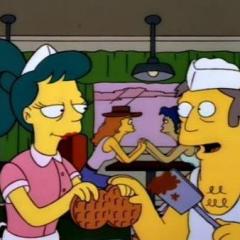
The MCU - Marvel Cinematic Universe
Pieter Boelen and one other reacted to mstrox for a topic
Black Panther was good as hell! Sure, it didn't stray far from the Marvel formula, but it did an excellent job of worldbuilding, had charismatic characters and a compelling villain, wasn't super quippy (I know that some people around here's gripe). It definitely had moments of slowness but I wouldn't call anything about the movie boring - just had some room to breathe. Score was also top-tier among Marvel Cinematic Universe, whether or not you'd call that damning with faint praise.2 points -
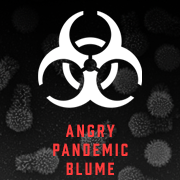
J.K. Rowling Just Posted A New Harry Potter Short Story
Molly Weasley and one other reacted to BLUMENKOHL for a topic
Why should I feel sorry for her? She fed the cancel culture only up until it turned around and ate her. She deserves every ounce of it.2 points -

New Project: John Williams Potter Scoring
Once and one other reacted to bollemanneke for a topic
Agreed. Maybe it's because the score to HP5 holds no special place in my heart, but I'm accepting this music really quickly. I don't agree with everything, but I'm having a blast.2 points -
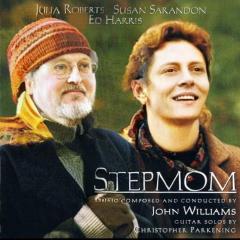
John Powell's FORCES OF NATURE (1999) - new 2020 La-La Land premiere
Edmilson and one other reacted to Not Mr. Big for a topic
Nice, porno music!2 points -
U don't need to click cosmicbook dot news, folks! The click is what they want!1 point
-

John Powell's FORCES OF NATURE (1999) - new 2020 La-La Land premiere
Yavar Moradi reacted to Jay for a topic
The $16 price tag for a 27 minute album is great, too1 point -
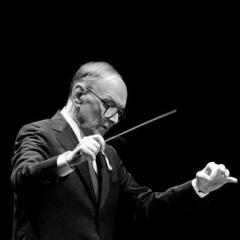
John Powell's FORCES OF NATURE (1999) - new 2020 La-La Land premiere
Yavar Moradi reacted to Koray Savas for a topic
It’s a surprising archival release. Never thought a score like this would have gotten an official release. Here’s hoping Pluto Nash can get a premiere issue one day.1 point -
The MCU - Marvel Cinematic Universe
bruce marshall reacted to Wojo for a topic
I want to watch the Peggy Carter show because they're real and they're spectacular.1 point -
Liam Neeson: ‘Star Wars’ Backlash Robbed Jar Jar Binks Actor of Becoming Next Eddie Murphy Sometimes I wonder if working in a Star Wars movie is more of a curse than a blessing for one's career.1 point
-
Yes! Deakins must be behind all this!1 point
-
I read 1 + 2 recently, or rather listened to the audiobooks. I really enjoyed them. Not sure I want to keep going, though. Thanks for your summary. I’ll probably get back into them at some point! I have been waiting for a not-completely-garbage edition of the books in English; looks like there is one now from Illumicrate (a small press I’ve never heard of): I don’t love it, but the price is low, and sure at least to keep its value.1 point
-
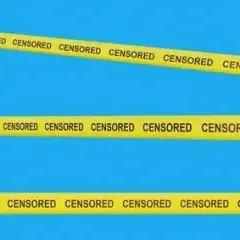
Restored Isolated Score: A.I. Artificial Intelligence
Holko reacted to Jurassic Shark for a topic
Great work!1 point -
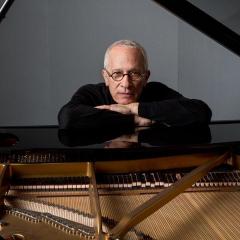
The MCU - Marvel Cinematic Universe
Pieter Boelen reacted to Edmilson for a topic
Black Panther is great! Gorannsson's score fits the movie like a glove.1 point -
Sometimes, I think the worse the movie, the better the score. And the converse is true: otherwise humdrum or unremarkable film music in a well-regarded movie can get a pass, and even absorb some of its critical esteem. I'm sure we can all think of plenty of examples of both. Good film music suits the film. Great film music elevates it. Truly masterful film music transcends it.1 point
-
Oh, this is perhaps the best JW restored isolated score that could be done (imho).1 point
-
More jokes, bigger, more, faster, ... It was trying too hard and that sabotaged things somewhat.1 point
-
Starting a lame hashtag and harassing people online is considered activism in today's cancel culture movement. Most of these people didn't care if Rowling had a career before this whole trans discrimination controversy.1 point
-
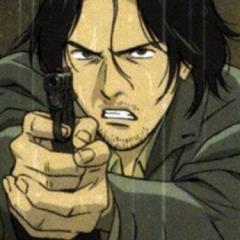
Gordy Haab & Stephen Barton's STAR WARS JEDI: FALLEN ORDER (2019)
Manakin Skywalker reacted to DrTenma for a topic
yes, indeed they're very different and I have a good idea of who wrote what but sometimes we get surprised and learn that some bits or arrangements are from another composer.1 point -
That Gandalf The White theme at 1:12 is >chef's kiss<1 point
-
Basically she's cancelled only by Twitter activists, the rest of her fans, including me, don't care about her trans comments1 point
-

"Farewell" from Ep. 9 Appreciation
Arpy reacted to Not Mr. Big for a topic
I love the emotional strings after the horn chorale; when Ben's ghost disappears1 point -
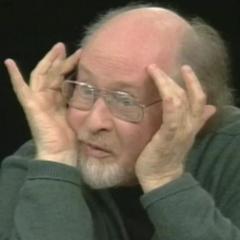
New Film Fest Ghent CD: World Soundtrack Awards: Tribute to the Film Composer
Jurassic Shark reacted to Thor for a topic
https://open.spotify.com/album/4lnqQYTDdgeZjJcmGBmbWF?si=MA4N1gbtQKyMGV1jrjo8kw1 point -
Easily one of the best film score cues of all time1 point
-
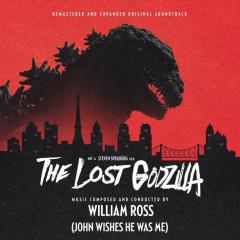
New Project: John Williams Potter Scoring
Potter Scoring Project reacted to TSMefford for a topic
Great stuff @Ravendor Studios Again, the emotional reaction is far better in this approach. I didn't expect Wand of the Phoenix for the WB Logo, but it really works quite well and gives this film a very different feel to the opening. I really didn't expect for the Dementor material to actually make me feel something, but it felt so nice to hear that against picture while we're seeing the dementors again. Excellent little cues with the Dursleys too. Nice to hear their little theme come back. I feel like, personally, Double Trouble doesn't feel right with the Mrs. Figg cue, but I like the more subtle rendition during the Expulsion cue. Could I ask why Double Trouble is coming back so much? I don't necessarily mind it, but I think I may be missing why you're using it. In Azkaban, from my interpretation, it's far more of a Hogwarts related thing. I feel like it very much represented everyday at Hogwarts. So it makes a bit of sense in the Expulsion cue in a more uncertain state I suppose. Just curious!1 point -
Updates: 1972 - The Poseidon Adventure Mike Matessino audio interview by Maurizio Cashetto and Tim Burden, December 2019 1974 - Earthquake Mike Matessino audio interview by Maurizio Cashetto and Tim Burden, December 2019 1974 - The Towering Inferno My Google Doc Mike Matessino audio interview by Maurizio Cashetto and Tim Burden, December 2019 1978 - Superman: The Movie Mike Matessino audio interview by Maurizio Caschetto and Tim Burden, February 2019 (part 1) Mike Matessino audio interview by Maurizio Caschetto and Tim Burden, February 2019 (part 2) Mike Matessino text interview by Todd Gilchrist for Nerdist, June 2019 1984 - The River My Google Doc Audio Interview by Maurizio Caschetto and Tim Burden, May 2020 1989 - Born on the Fourth of July My Google Doc 1992 - Far and Away My Google Doc Audio Interview by Maurizio Caschetto and Tim Burden, May 2020 2011 - War Horse My Google Doc 2012 - Lincoln My Google Doc 2013 - The Book Thief My Google Doc 2015 - Star Wars: The Force Awakens My Google Doc 2017 - The Post My Google Doc 2019 - Star Wars: The Rise of Skywalker My Google Doc1 point
-
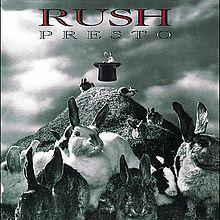
The Official Pop and Rock Music thread
Jay reacted to Naïve Old Fart for a topic
It's not bad, and its certainly better than a home cover of TIME STAND STILL, which I heard, this afternoon. I like the Rush references (that darn dragon; the rotisserie chickens) and it's played well, if a tad too fast. Not a bad effort.1 point -
Here's a summary of the various and confusing versions of the different prelude, main title, and end title combinations What was recorded 1M1 is a single cue that covered the original prelude scene (that we've never seen footage of) and the original main titles New 1M1 is the new cue for the new version of the prelude (the curtain opening and old comic books, etc) New 1M1 Part 2 is the new cue for the main title, "with certain orchestral flourishes synchronized to the cosmic animation" End Title is the end credits, there are no revisions The film itself The start of the film features the new Prelude (New 1M1), seguing into 16 seconds of the new Main Title (New 1M1) before switching over to a shortened edit of End Title, which has its speed altered from its original recorded speed The end of the film features The Prison Yard (New 14M4/15M1) seguing into the new Main Titles (New 1M1 Part 2), which has its speed altered from its original recorded speed The 1978 OST album Track #1, "Theme From Superman (Main Title)" is actually the start of the old Prelude/Main Titles (1M1) seguing into the End Title, with the final crescendo and crash added from the end of New 1M1 Part 2. Track #16 "End Titles" is an edited down version of The Prison Yard (New 14M4/15M1) seguing into the End Title (again) The 2000 Rhino release Disc 1 track 1 "Prelude and Main Title March" is the new Prelude (New 1M1), seguing into 16 seconds of the new Main Title (New 1M1) before switching over to a shortened edit of End Title, but unlike the film itself it plays at the correct speed here Disc 1 track 17 "Main Title March (Alternate)" is the full unedited End Title recording in its own track Disc 2 track 1 "Superman March (Alternate) is the old Prelude/Main Titles (1M1) Disc 2 track 13 "Finale and End Title March" is The Prison Yard (New 14M4/15M1) seguing into new Main Titles (New 1M1 Part 2), but unlike the film itself it plays at the correct speed here Disc 2 track 18 "Theme From Superman (Concert Version)" is the the start of the old Prelude/Main Titles (1M1) seguing into the End Title, with the final crescendo and crash added from the end of New 1M1 Part 2, like the original OST album's track #1 (in this instance, taken directly from that album master) The 2008 FSM release Disc 1 track 1 "Theme From Superman" is the the start of the old Prelude/Main Titles (1M1) seguing into the End Title, with the final crescendo and crash added from the end of New 1M1 Part 2, like the original OST album's track #1 Disc 1 track 2 "Prelude and Main Title" is the new Prelude (New 1M1), seguing into the new Main Titles (New 1M1 Part 2), premiering Williams' intentions Disc 2 track 9 "The Prison Yard / End Title" is The Prison Yard (New 14M4/15M1) seguing into the End Title Disc 2 track 11 "Prelude and Main Title (Alternate)" is the old Prelude/Main Titles (1M1) Disc 2 track 18 "The Prison Yard / End Title (Film Version) is The Prison Yard (New 14M4/15M1) seguing into new Main Titles (New 1M1 Part 2), playing at the correct speed like the Rhino track Disc 8 track 1 "Prelude and Main Title (Film Version)" is the new Prelude (New 1M1), seguing into 16 seconds of the new Main Title (New 1M1) before switching over to a shortened edit of the End Title, playing at the correct speed like the Rhino track The 2019 La-La Land release Disc 1 track 1 "Prelude and Main Title" is the new Prelude (New 1M1), seguing into the new Main Titles (New 1M1 Part 2), Williams' intentions Disc 2 track 10 "The Prison Yard and End Title" is The Prison Yard (New 14M4/15M1) seguing into the End Title Disc 2 track 12 "Prelude and Main Title (Alternate)" is the old Prelude/Main Titles (1M1) Disc 2 track 17 "Prelude and Main Title (Film Version)" is the new Prelude (New 1M1), seguing into 16 seconds of the new Main Title (New 1M1) before switching over to a shortened edit of the End Title, playing at the correct speed like the Rhino track Disc 2 track 22 "The Prison Yard and End Title (Film Version)" is The Prison Yard (New 14M4/15M1) seguing into new Main Titles (New 1M1 Part 2), playing at the correct speed like the Rhino track Disc 3 track 1 "Theme From Superman (Main Title)" is is the the start of the old Prelude/Main Titles (1M1) seguing into the End Title, with the final crescendo and crash added from the end of New 1M1 Part 2, being a new rebuild of OST track #1 Disc 3 track 16 "End Titles" is an edited down version of The Prison Yard (New 14M4/15M1) seguing into the End Title (again), being a new rebuild of OST track #161 point
-
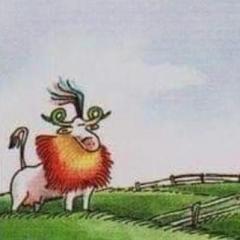
Star Wars is better than everything
Disco Stu reacted to The Illustrious Jerry for a topic
1 point -
From Powell, I'd love an expanded El Dorado and Evolution.1 point
-
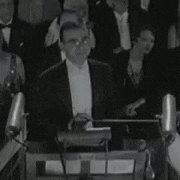
JWFan EXCLUSIVE: The Rise of Skywalker Partial Cue List Revealed
enderdrag64 reacted to Fabulin for a topic
1 point -

A.I. Artificial Intelligence (2001) - 2015 3CD set from La-La Land Records
Jurassic Shark reacted to Not Mr. Big for a topic
1 point -
No, you don't understand. We're talking about mathematical facts, not about different views or perceptions. I don't know the technical details about the FLAC codec, but I know it's lossless and just by default I would assume it is in fact VBR. That's not a contradiction. If you create a Zip (or Rar or whatever) archive of files on your computer, that archive will be smaller than the sum of all the files you put in it. Because it's compressed. But if you uncompress it, you will get exactly the same files as before (otherwise a program or a text compressed with Zip would be broken after unzipping). That's called lossless compression. It's still compressed, because the compression algorithm makes certain probability assumptions about its contents. Take text files, for example. They mostly consist of upper case letters, lower case letters, numbers and a few additional characters like spaces, line breaks and commas. Let's say those characters add up to about 26 + 26 + 10 + 10 = 72 characters. In a text file, each of these characters is stored in (at least) on byte. A byte can take any value between 0 and 255, but for a text file, most bytes only contain one of 72 different values. You can therefore compress the file by putting the first character in the first byte, along with information about the next character or characters. Then the second byte might start with information about the third or fourth character, etc. You'll end up with a file that describes exactly (!) the same text, but takes up less space. If you apply the corresponding decompression algorithm, it will output an exact (!) copy of the original text file. That's lossless compression - it is in fact lossless. Now if you try to compress a file that contains completely random data (each byte contains a random value between 0 and 255), and the content is so random that you don't have certain values that appear significantly more often than others (as described above for text files), you won't be able to make it any smaller by compressing it. But most files you compress will be text files, or images, or audio files, or program files, or data files, all of which are decidedly non-random. They have values that appear significantly more often than others, and certain repetitive patterns, that can be used to create a smaller representation of the files without losing any information. For example, "AAAAAAAAAAAAAAAAAAAA" takes up twenty characters. "20xA" takes up four characters, but if I tell you to write down the first one and then tell you to write down "20 times A", you'll end up with the same text. Different types of files have different types of characteristics. The value distributions and repetitive patterns in text files and program files, for examples, are decidedly different. So are those for images and audio data. You can compress all kinds of files with general purpose algorithms like Zip and Rar, but if you know that you're going to compress image files, you can choose to use a different compression algorithm which is optimised for the distributions and patterns for images and will therefore be able to compress your image files more efficiently. You could for example use PNG to losslessly compress your image, or JPEG to make it even smaller, although in this case with a loss of certain details. JPEG and other lossy compression algorithms know about the data they want to compress (e.g. images) and decide what information they can throw away without anyone really noticing. For example, if you have a 100,000 x 100,000 pixels image that you're only going to view as a whole, and every pixel has the exact same colour (255,0,0 - a pure full red), but one single pixel somewhere around the middle has a minimally different colour (254,0,0 - a pure, nearly full red) which your eyes won't be able to notice, even if your display hardware is good enough to actually display it), you can take the original image of 100,000 x 100,000 x 3 bytes (3 bytes means 24 bits per pixel), i.e. 28 gigabytes, and compress it to something that says "100,000 pixels wide, 100,000 pixels high, all of them red", which you could fit in 7 bytes (!). That would be a phenomenal compression ratio of 1 to roughly 4 billion. If you want to compress it losslessly, you would have to at least say "100,000 pixels wide, 100,000 pixels high, all of them red, except pixel 45,194/49,240, which is nearly red", which would e.g. take 14 bytes - still tiny compared to the raw data, but twice the size of our lossy version. But for that increase in size, you would get the ability to restore the exact original image from your 14 bytes file, including that special pixel in the middle. That's the difference between formats like JPEG and PNG. And for audio files, you have the same situation. You have lossy formats like MP3, Ogg Vorbis and AAC, and lossless formats like WAV (typically no compression at all), FLAC and Apple Lossless. The former work by purging audio data they believe you cannot hear (for example a barely audible noise playing at the same time as an explosion, or very low or high frequencies that most humans cannot hear anyway, or more complex psychoacoustics) and discard them. That means MP3 & Co can create a smaller file than a lossless algorithm like FLAC can, but you will not be able to exactly recreate the original raw audio data, and if you take away too much information, you will in fact be able to hear the difference. FLAC & Co don't do that. They don't take away anything. They just use certain properties of audio data to make files smaller by saying the audio equivalent of "20xA" instead of "AAAAAAAAAA". Much more complicated than that in detail, of course, which is why it also takes CPU power to do the compression and decompression. You can therefore choose the compression strength - stronger compression means that the files get smaller, but compression (and possibly decompression) takes longer. If you want your compression to be faster, or if you plan to play the compressed files on a device that has a slow CPU (an old mobile phone) or a lot of other stuff going on (a gaming console), you might opt for slightly larger files that need slightly less CPU time on playback. And as for variable bit rates: That just means that the compression makes some parts of files smaller than others. For example, if you have a text like "AAAAAAAAAAAAAAAAAAAABAAAAAAAAAAAAAAAAAAAA", you could compress it to "20xA1xB20xA". That's a variable bitrate compression - the 20 As at the beginning and and have been compressed to "20xA", i.e. 4 characters each, while the single "B" in the middle has actually become larger by turning it into "1xB". You have a lower bitrate in the beginning and end than in the middle, but you still have an overall smaller file, and you're still lossless.1 point

